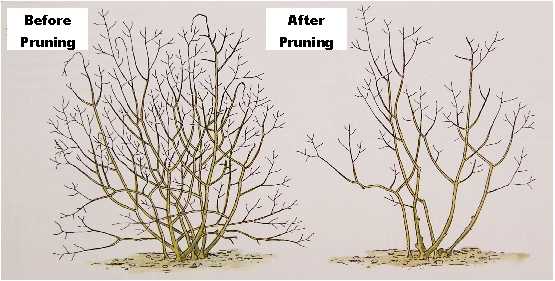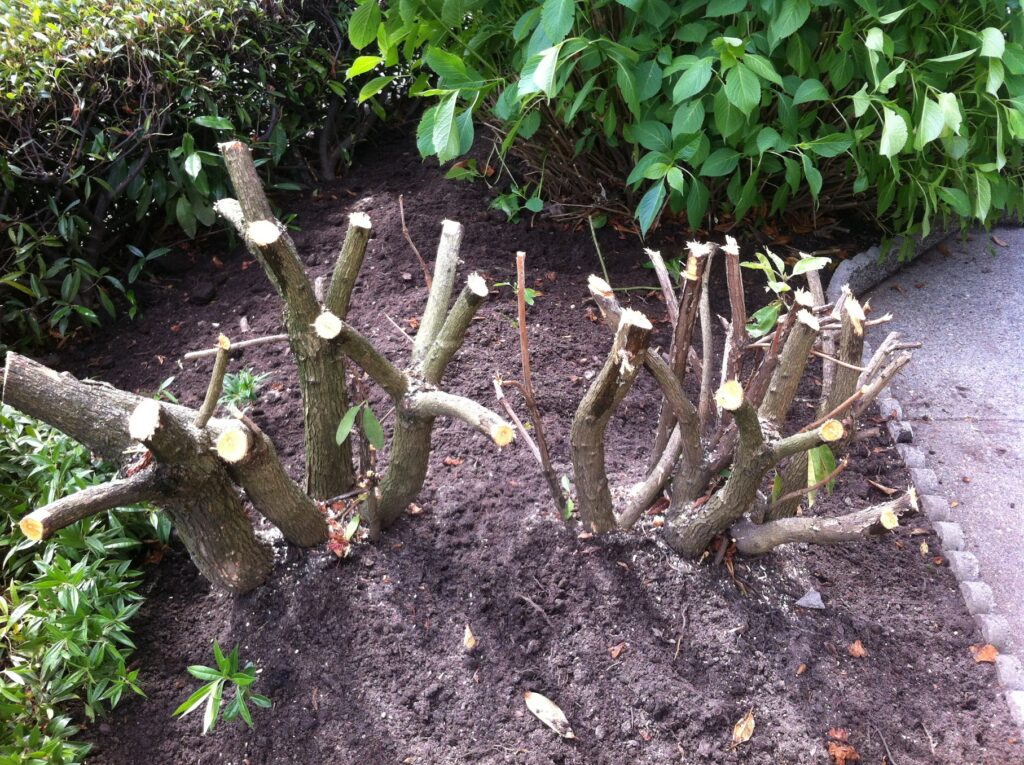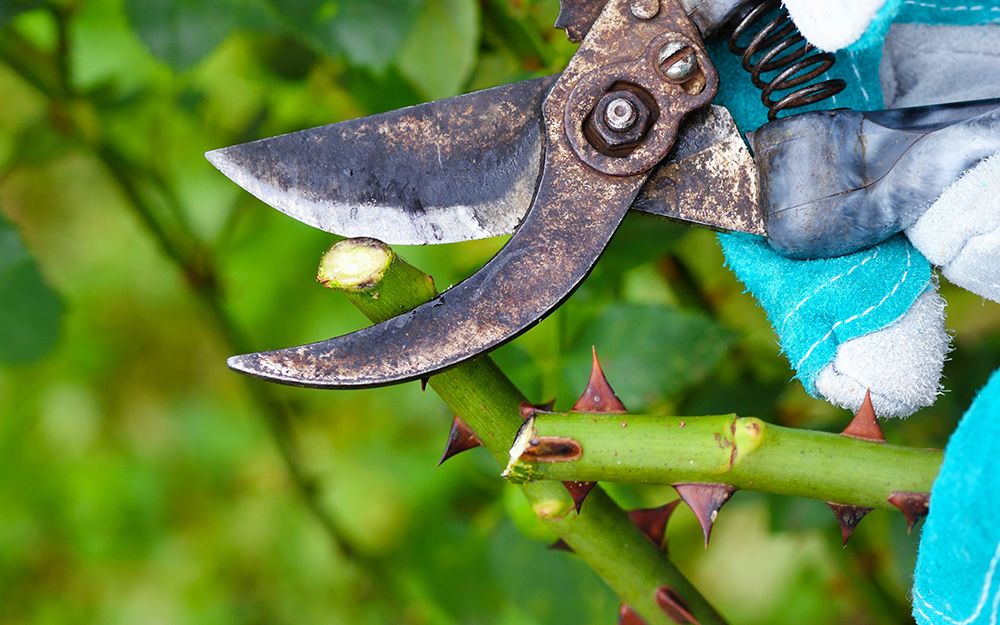When you are outside, look around to assess the damage to trees and shrubs caused by the heavy snow and rabbit damage. The biggest mistake is cutting at the point of the damage and leaving the rest of the stump.
Coming up is the time for pruning shrubs and trees are coming up, from the end of March through April. The main thing for pruning this year is removing rabbit damage. If the chewing is around the whole branch or cane, any part above the damage will die creating a place for insects and diseases to enter the plant. So remove the area above the damage or remove the cane to the ground. Next, remove the broken or bent canes and branches that probably were damaged in the heavy snow.

For shrubs that are established, the 1/3 rule applies. Remove 1/3 of the older canes or branches. This causes a rejuvenation in the plant to produce young, healthy growth. Then you can lightly tip prune to retain the shrub’s height and width. Also, remove any branches that are rubbing each other and any suckers popping up.
If the shrub is totally damaged from this winter or has just been neglected for years, you can remove the overgrowth down to six to twelve inches above the ground. Shrubs that respond to this are spirea, honeysuckle, lilac, weigela, viburnums that produce multiple canes (shoots), and potentilla.
If you have shrubs that bloom in the spring on old wood like lilac, wait till the plant gets done blooming. Just remove the damaged and broken canes.

You can thin out the shrubs if overgrown. Make your cuts on a 45-degree angle to shed water above an outward-facing bud so the new growth grows out from the plant and not inward.

For Tea, Floribunda, Grandiflora, and other shrub roses the pruning is similar for all shrubs:
- Start at the bottom of the bush and work up pruning the dead growth off. You will see the green lower cane becoming brown.
- I use an anvil hand pruner for most of the jobs.
- Then cut at a 45-degree angle, about 1/4-inch above buds that face away from the center of the bush. Your goal is to open up the center, so the plants get plenty of sunlight and good air circulation.
- Remove any shriveled, diseased, or broken stems and other wood. Cut off twigs or branches that rub across or cross each other.
- Leave three to five strong, healthy branches, each 6 to 8 inches long, when cutting back hybrid tea roses. Leave eight to 10 branches on floribundas, each 8 to 12 inches long.
- Remove any suckers; these are stems that sprout from the roots below the graft (a swollen area on the stem).
- Walk around the plant to ensure that your bush has an even shape.

The best pruner to use is an anvil hand pruner or an anvil looper for the larger branches.
